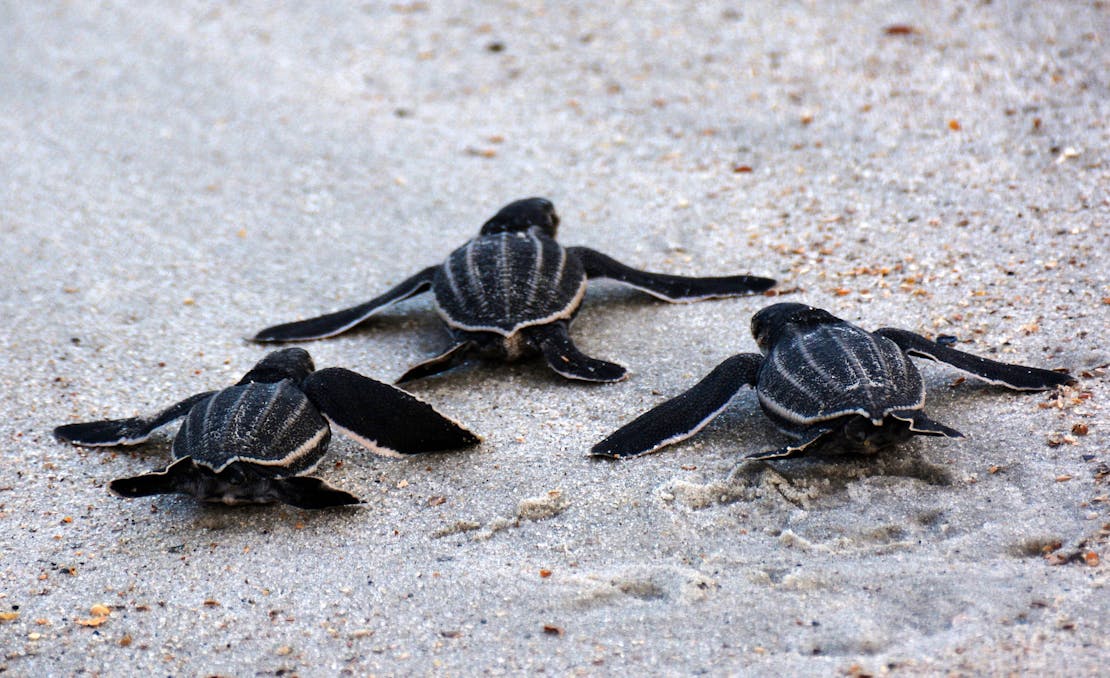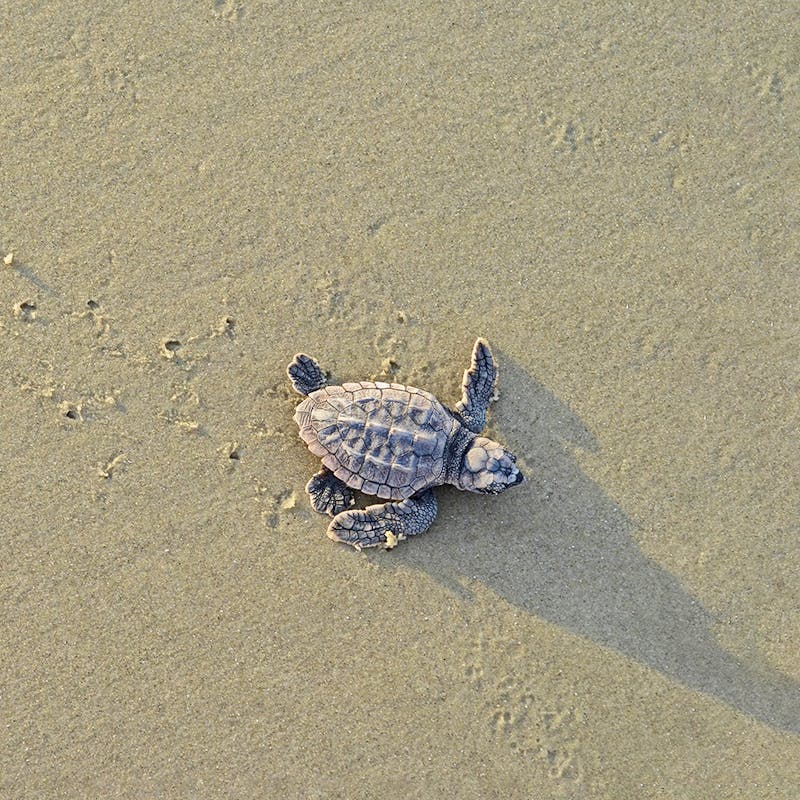It’s summertime here in Florida, which means sea turtle nesting season is well underway with female turtles swimming ashore and laying eggs along our sandy beaches. About 60 days later, the hatchlings will make their mad dash back to the ocean.
Florida’s beaches are globally important for sea turtle nesting. In fact, Florida beaches host the largest aggregation of threatened loggerhead turtles in the world. Nesting of endangered green and leatherback sea turtles has been steadily increasing on Florida beaches and is regionally significant. Two other endangered species, Kemp’s ridley and hawksbill turtles, nest less frequently in the state but forage in Florida waters. Overall, nearly 90% of sea turtle nesting in the continental United States occurs on Florida’s beaches!
Sea turtles’ nesting season along Florida’s Atlantic coast officially starts in March. The nesting season in other southeastern states and on the Gulf Coast starts around May. Nesting females come ashore at night to dig their nests and lay eggs. Whether an egg hatches as male or female depends on sand temperature.
Cool Dudes and Hot Chicks
For sea turtles, eggs incubating in 88 degrees Fahrenheit or hotter sand will hatch as female. Those incubated below that temperature will hatch as male. Typically, eggs on the top of a clutch will become warmer with increased sun exposure and eggs buried further down in the sandy nest will stay cooler. Nesting females that lay their clutches in more shaded locations — such as on protected beaches with maintained dunes, natural forest cover and other vegetation — hatch more males.
With global temperatures on the rise due to climate change, sea turtle researchers are finding a disproportionate number of female hatchlings. This is likely linked to hotter temperatures starting earlier in the season and lasting longer, hotter sand temperatures and decreased vegetation that would otherwise provide shade. Some surveys indicate at least 90% of sea turtle hatchlings in Florida are female, which could have major implications for some species.
From Egg to Sea
Male or female, when the tiny hatchlings emerge from the nest as a group, they need to make it to the ocean as quickly as possible. Baby turtles orient themselves to the brightest horizon and rush towards it. On natural beaches, the brightest light comes from reflections from the moon and stars over the water, which guide the turtles towards the ocean.
Unfortunately, beachfront lighting from houses, condos, hotels and streetlamps can disorient hatchlings, as well as adult sea turtles, leading them inland. If turtles become stranded on land, their chances of survival diminish. Dehydration and sun exposure can be fatal, and stranded hatchlings are more likely to fall prey to birds, crabs and other predators. Adults and hatchlings have even been killed by vehicles in parking lots and roads after becoming confused by artificial lighting.
Make a Difference
The good news is, there are many things we can do to make a difference. Whether you live in a state where sea turtles nest or are just visiting, never disturb sea turtles or nests. During nesting season, residents, visitors and businesses in coastal communities should turn out lights visible from the beach or use turtle-friendly lighting that shields, redirects and lowers the intensity of the lighting on the property.
Always properly discard and secure garbage. Food waste on the beach or in unsecured trash containers attracts predators, such as raccoons, foxes, seagulls and even ants that destroy tens of thousands of sea turtle eggs and hatchlings every year. Plastic litter like bags, styrofoam and helium balloons makes its way down rivers to the sea. Sea turtles may mistake this trash for food, suffering injury or death. Sea turtles become entangled in litter and fishing lines on the shore and in the water.
If you find sea turtle eggs, an exposed nest, hatchlings, or an injured or dead turtle on the beach contact the state wildlife agency. Do not ever handle or collect eggs or remove hatchlings from the beach.
Finally, climate change impacts are and will continue to be significant not just in Florida but globally. Use energy-saving and efficient appliances, light bulbs and transportation. Reduce waste whenever possible, and reuse and recycle all plastic, glass and paper.
Thanks to decades of conservation efforts by Defenders and others, and to vital protections provided by the Endangered Species Act, loggerhead and green sea turtles in Florida had record-breaking nesting numbers in 2023. This is just one illustration of the value of our tireless efforts to protect and strengthen the ESA and mitigate the threats to sea turtle survival.
Being mindful and making a few small changes can go a long way toward conserving these amazing creatures. Sea turtles have been swimming the world’s oceans for 120 million years. Let’s do our best to help them survive and thrive for generations to come.
Buckle up, we're virtually hitting the road this summer! Learn about the other amazing species in Florida we are fighting for and check out cool places you can visit during your next trip to the state.












Follow Defenders of Wildlife
facebook bluesky twitter instagram youtube tiktok threads linkedin